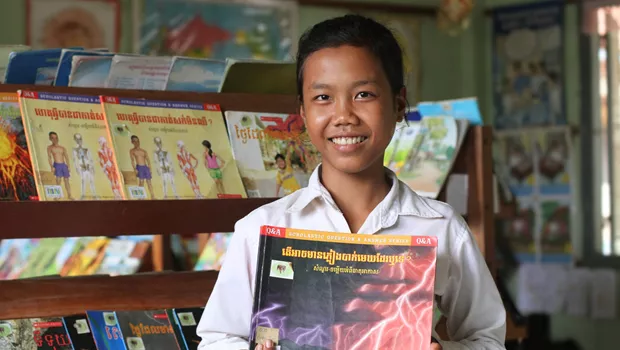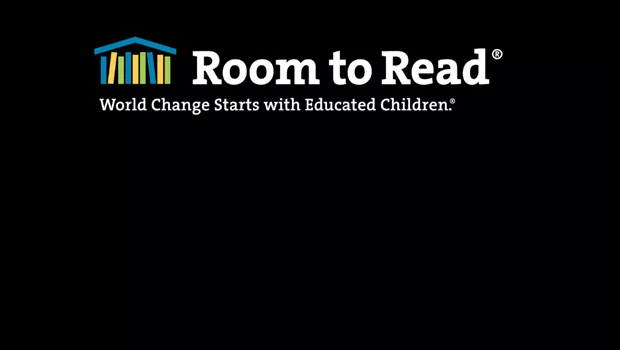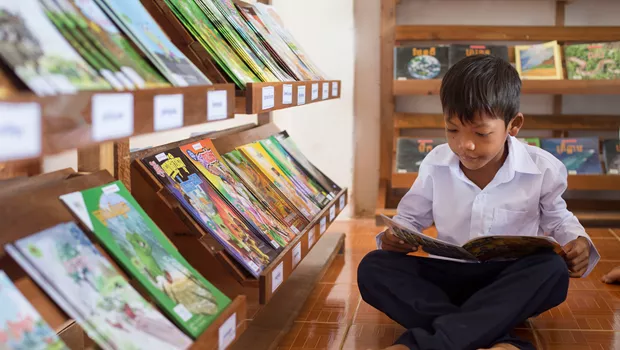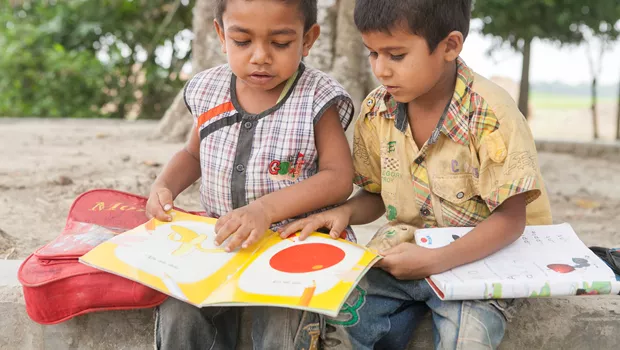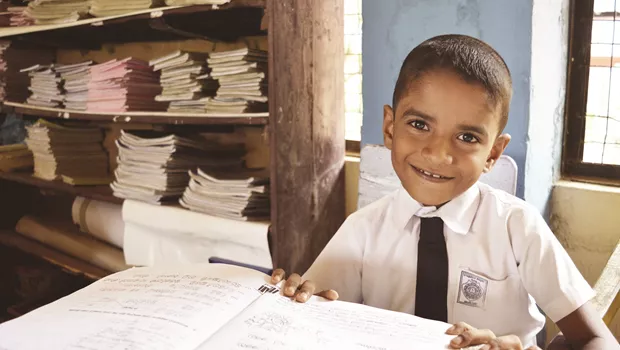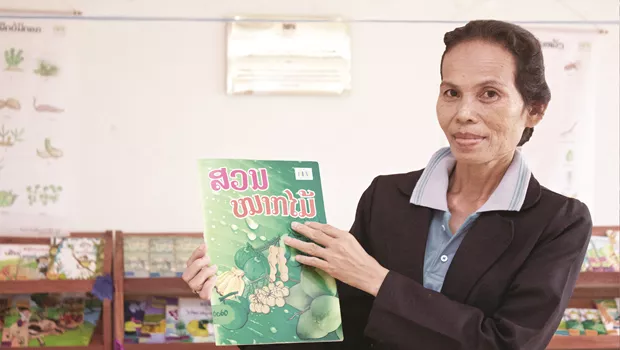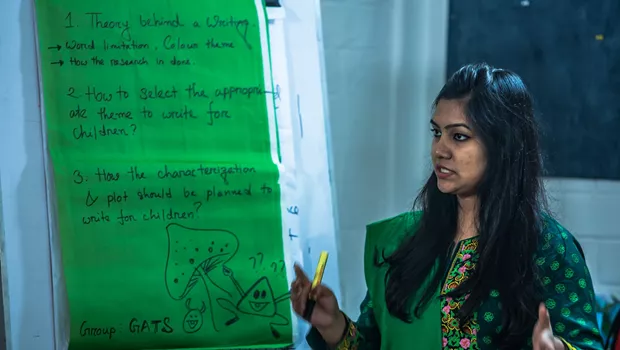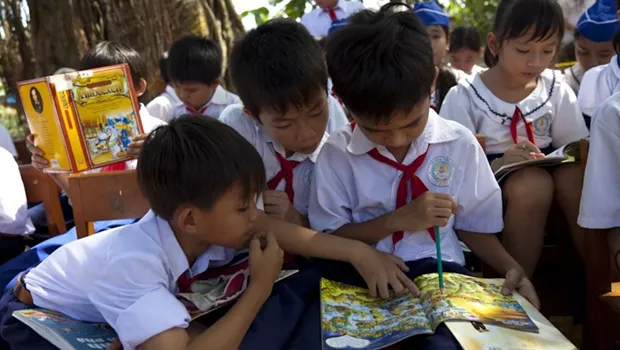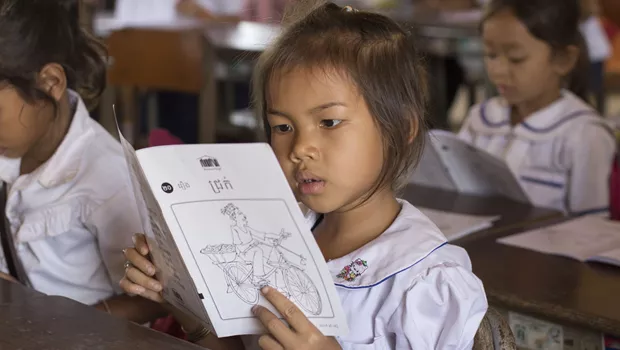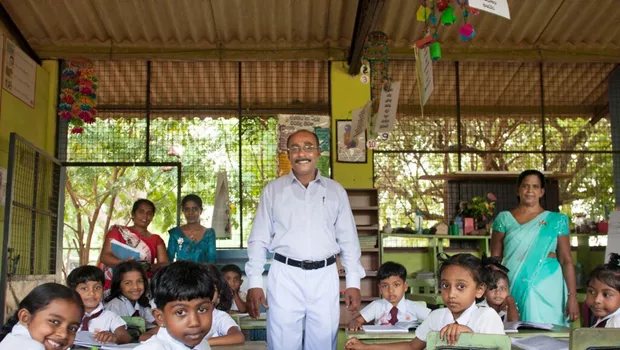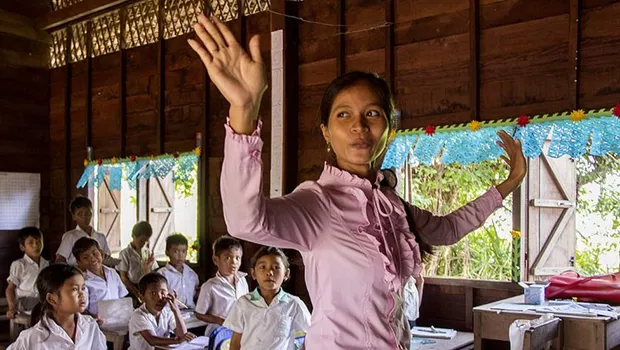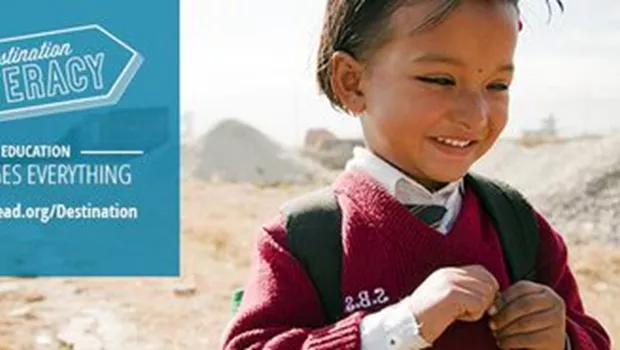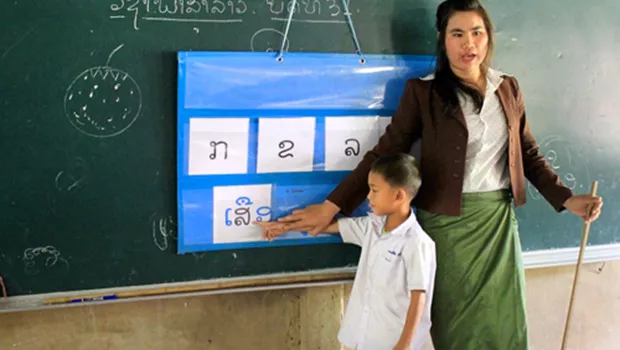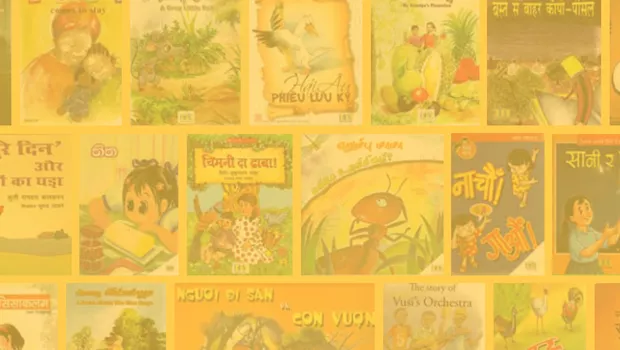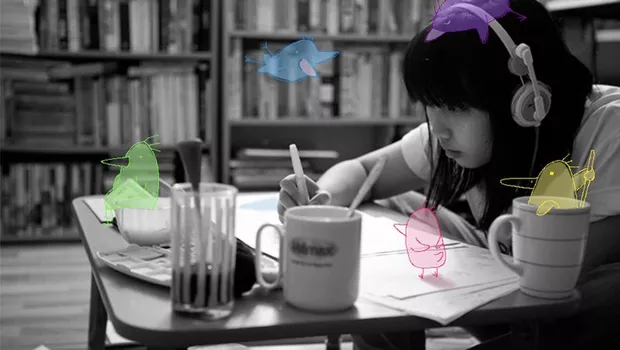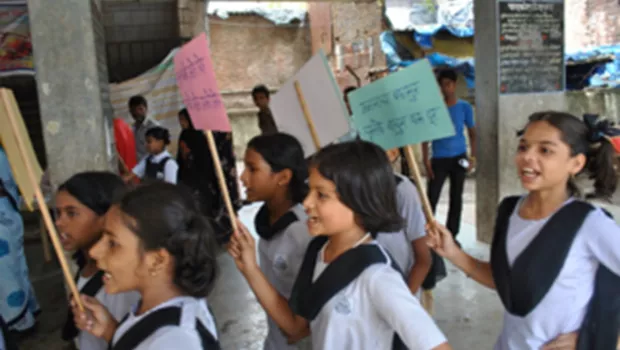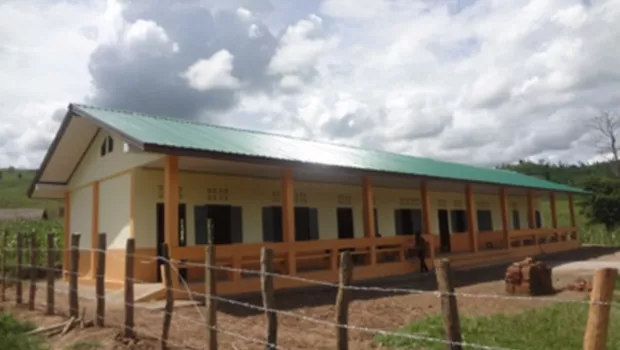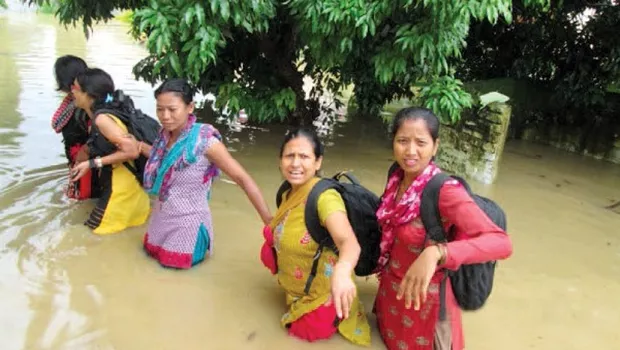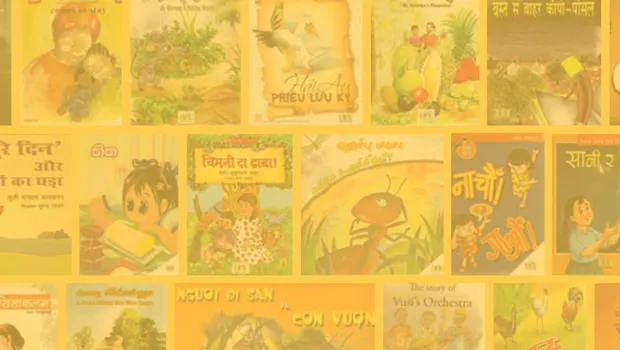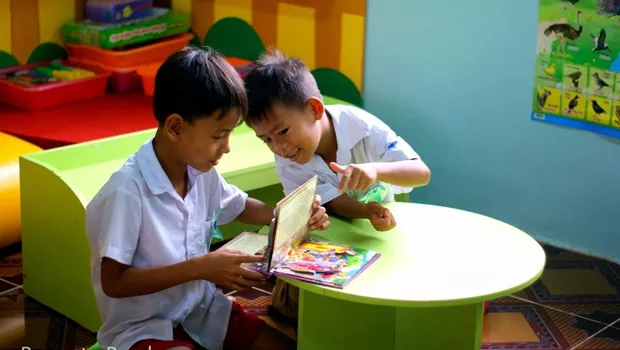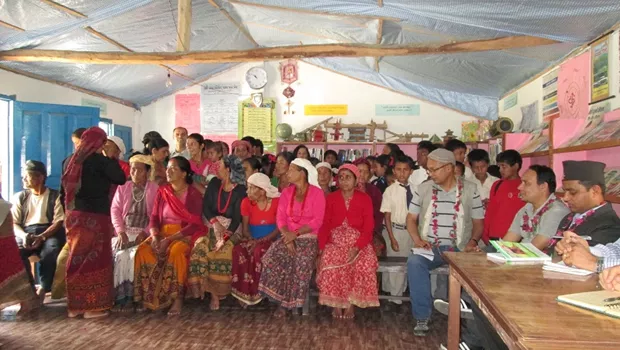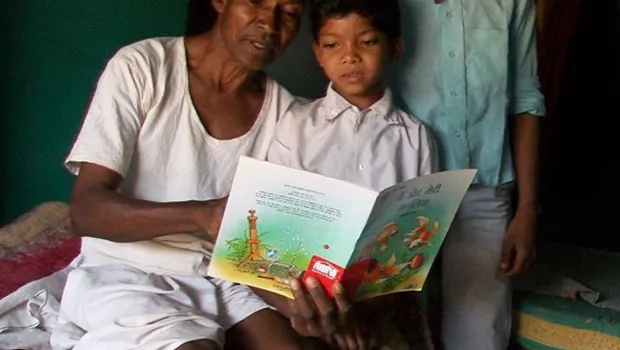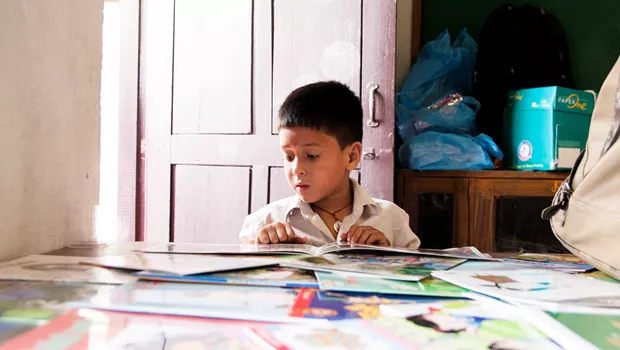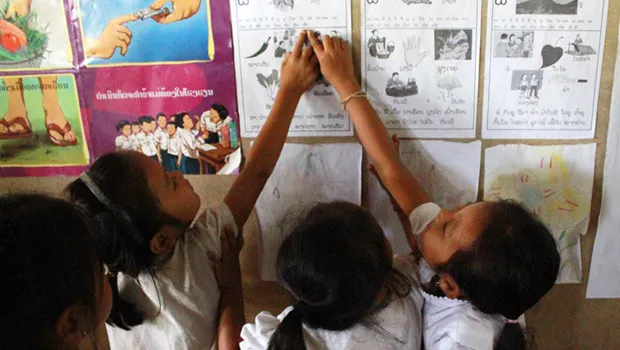“Who wants to read to the class?” Tiny hands shot up in the air. First grade teacher Namex Pen picked Reaksa, who scrambled to her feet. The six-year-old ran to the first-level bookshelf in the newly-established school library in Cambodia and grabbed her current favorite, Chek Chek Wants to Get Married.
“I love reading stories!” said Reaksa, who checks out three books a week to take home. No one had ever read stories to her before — and the same goes for her classmate Kimhour. Like Reaksa, she borrows books to read to her eight-month-old cousin at home.
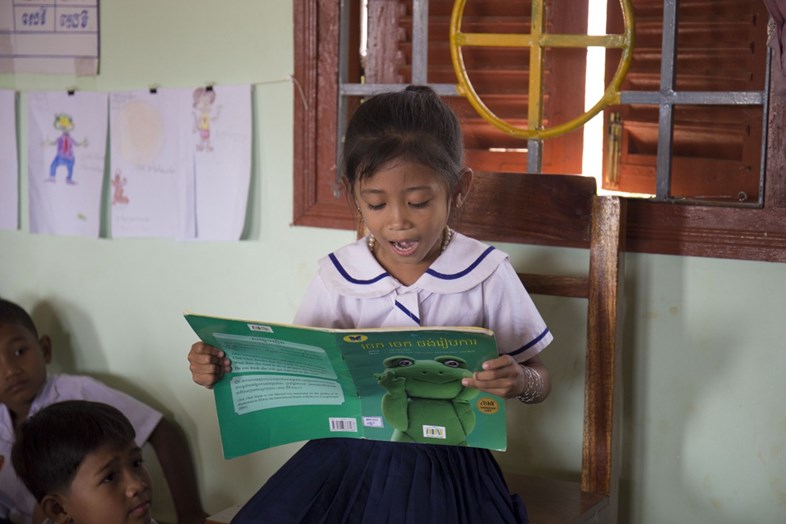 Six-year-old Reaksa from Cambodia reads her favorite book from the new library to the entire class.
Six-year-old Reaksa from Cambodia reads her favorite book from the new library to the entire class.
The library has only been open for three months and already the students can’t wait to go. Every Wednesday, Namex Pen takes them down the hall to the bright, book-filled room for ‘library period.’ They enjoy listening to her read from the colorful stories — it’s a brand new experience for them.
“They borrow lots of books, especially after library period,” said Namex, who has taught first grade at the school for 28 years, “so many that I barely manage to write them all down in the logbook!” She giggled with delight.
All of this was new to the teachers at Kampong Thom Primary School, too. Until recently, they hadn’t known how to show their students how much fun reading can be.
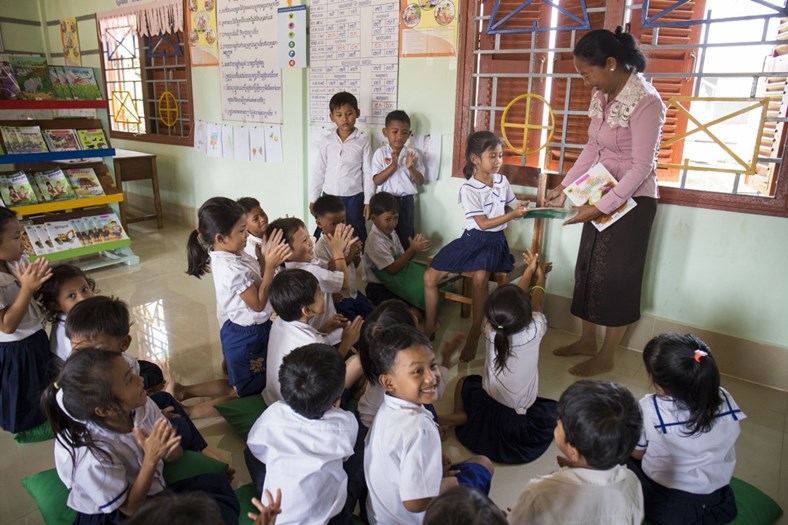 Little Reaksa just read her favorite book to the entire class and her teacher Ms. Pen beams with pride. Just a few months ago this wouldn’t have been possible.
Little Reaksa just read her favorite book to the entire class and her teacher Ms. Pen beams with pride. Just a few months ago this wouldn’t have been possible.
Going beyond a library’s four walls
“Where is my watch??” said Namex, turning the colorful page. Her face grew animated as she lowered her voice to make the sound of a clock ticking: “Tick! Tick! Tick!” Every first grader in the library was about to burst with anticipation.

A first-grade teacher in Cambodia for 28 years, Namex Pen was surprised at the difference learning how to read to her students has made.
Even though Namex Pen had shared stories with her students many times in class before, her method had been to read from a government-issued textbook peppered with bland illustrations, then ask them to summarize the story. They’d never had a library before. Reading seemed like a chore and her students were easily distracted.
Namex and a group of teachers at Kampong learned how to read to young children during our Room to Read training course. We also partnered with the school to establish the library, which we filled with children’s books published locally. Combined, the new library, books and reading activities — all part of our comprehensive Literacy Program — encourage in young children the habit of reading.
At the training, Namex discovered that teaching young students to read for fun was a skill she could learn. And she realized that the habit of reading can have a fundamental impact on a child — one that goes far beyond a library’s four walls.
“The techniques Room to Read taught me are so helpful,” Namex said. “I’m even introducing my students to the author and illustrator,” –which turns out to be a fun task since Room to Read’s publishing team only draws on local talent.
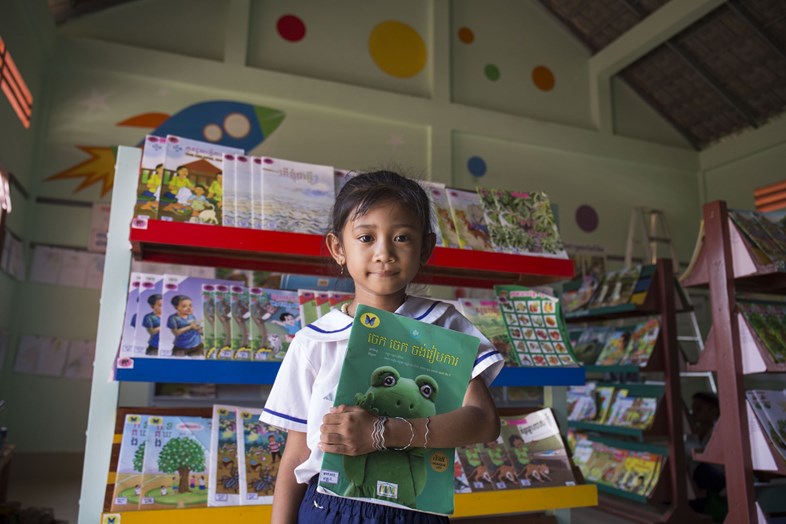 After just three months, little Reaksa is already reading her favorite book to her classmates in the library Room to Read established at her school.
After just three months, little Reaksa is already reading her favorite book to her classmates in the library Room to Read established at her school.
“I can see a huge improvement”
Before the training course, Kampong teacher Sokmol Khit only knew about one reading activity — read aloud. Now she knows how to pair reading activities with the right grade. She likes the shared reading activity for kindergartners because they can learn about sound and intonation while reading along.
To make sure the teachers are comfortable with the new approach, we give refresher training courses the following year. In addition, our local Library Management Facilitator visits the library twice a month to monitor a teacher’s library period — the weekly hour when each class goes to the library for a reading activity.
“It used to be only the librarians were trained,” says Sokmol. “Now that every teacher in school is involved in promoting reading I can see a huge improvement.”
Getting kids excited about reading
Five-year-old Kimhour holds her favorite book in the colorful Room to Read-established library. Before she only had government-issued textbooks to read from.
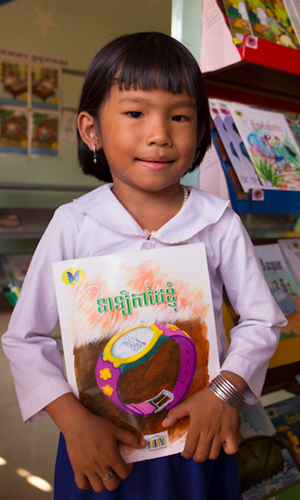
Our decision to train the teachers across all our countries of operation came about when we noticed that in a number of countries where we had established libraries, children weren’t reading as much as we had hoped.
“We felt that having the teacher lead the reading activities would help students see the appeal of books and get them excited about reading on their own,” Claire Wyatt, the Literacy Program’s director, explained.
And that’s just what our Reading Promotion Study concluded, which we recently ran across 106 schools in Africa and Asia: a student’s habit of reading is significantly encouraged when a Room to Read-trained teacher conducts the reading activities.
“Throughout Cambodia, we’ve noticed that this new approach has made teachers more active in encouraging children to read,” noted Sok Ieng Chan, Room to Read Cambodia’ Literacy Program manager.
In fact, over just one year the number of books checked out per student from our libraries in Cambodia jumped 61%.
Her favorite book in hand, Reaksa ran to the front of the room. She plopped on the chair, her little feet swinging, and began reading Chek Chek Wants to Get Married, an award-winning book, to the entire class. Her teacher Ms. Pen had been the first person to ever read a storybook to her. She felt so proud — now she could, too!
Read more about our Literacy Program
Find out about our impact in Cambodia

